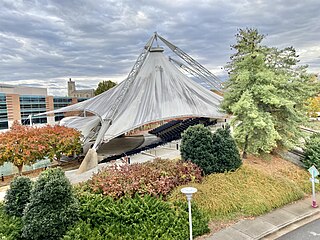
Knoxville is a city in and the county seat of Knox County, Tennessee, United States. As of the 2020 United States census, Knoxville's population was 190,740, making it the largest city in the East Tennessee Grand Division and the state's third-most-populous city after Nashville and Memphis. It is the principal city of the Knoxville metropolitan area, which had a population of 879,773 in 2020.

Rockwood is a city in Roane County, Tennessee, United States. Its population was 5,562 at the time of the 2010 census. It is included in the Harriman, Tennessee Micropolitan Statistical Area.
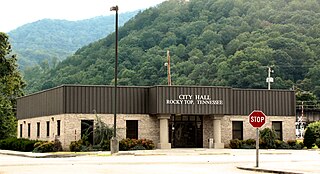
Rocky Top is a city in Anderson and Campbell counties in the eastern part of the U.S. state of Tennessee, northwest of Knoxville. The population was 1,781 at the 2010 census. Most of the community is in Anderson County and is included in the Knoxville Metropolitan Statistical Area. On June 26, 2014, the city officially changed its name from Lake City to Rocky Top, after a last-ditch effort by the copyright owners of the song "Rocky Top" was denied by a federal court.

John Price Buchanan was an American politician and farmers' advocate. He served as the 25th governor of Tennessee from 1891 to 1893, and was president of the Tennessee Farmers' Alliance and Laborers' Union in the late 1880s. Buchanan's lone term as governor was largely marred by the Coal Creek War, an armed uprising by coal miners aimed at ending the state's convict lease system.
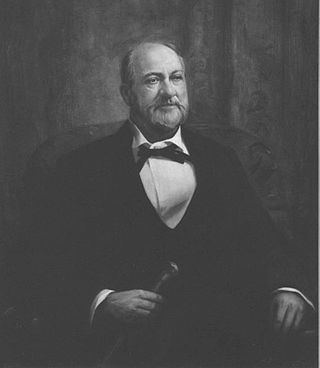
Peter Turney was an American politician, soldier, and jurist, who served as the 26th governor of Tennessee from 1893 to 1897. He was also a justice of the Tennessee Supreme Court from 1870 to 1893, and served as the court's Chief Justice from 1886 to 1893. During the Civil War, Turney was colonel of the First Tennessee Regiment, one of the first Tennessee units to join the Confederate Army.

Briceville is an unincorporated community in Anderson County, Tennessee. It is included in the Knoxville, Tennessee Metropolitan Statistical Area. The community is named for railroad tycoon and one-term Democratic U.S. Senator Calvin S. Brice of Ohio, who was instrumental in bringing railroad service to the town.
The Birmingham District is a geological area in the vicinity of Birmingham, Alabama, where the raw materials for making steel, limestone, iron ore, and coal are found together in abundance. The district includes Red Mountain, Jones Valley, and the Warrior and Cahaba coal fields in Central Alabama.
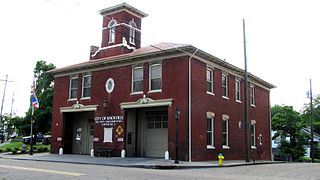
Mechanicsville is a neighborhood in Knoxville, Tennessee, United States, located northwest of the city's downtown area. One of the city's oldest neighborhoods, Mechanicsville was established in the late 1860s for skilled laborers working in the many factories that sprang up along Knoxville's periphery. The neighborhood still contains a significant number of late-19th-century Victorian homes, and a notable concentration of early-20th-century shotgun houses. In 1980, several dozen properties in Mechanicsville were added to the National Register of Historic Places as the Mechanicsville Historic District. The neighborhood was also designated as a local historic district in 1991, subject to historic zoning and design standards.

The Tennessee Coal, Iron and Railroad Company (1852–1952), also known as TCI and the Tennessee Company, was a major American steel manufacturer with interests in coal and iron ore mining and railroad operations. Originally based entirely within Tennessee, it relocated most of its business to Alabama in the late nineteenth century, following protests over its use of free convict labor. With a sizable real estate portfolio, the company owned several Birmingham satellite towns, including Ensley, Fairfield, Docena, Edgewater and Bayview. It also established a coal mining camp it sold to U.S. Steel which developed it into the Westfield, Alabama planned community.

The Southern Terminal is a former railway complex located at 306 West Depot Avenue in Knoxville, Tennessee, USA. The complex, which includes a passenger terminal and express depot adjacent to a large railyard, was built in 1903 by the Southern Railway. Both the terminal and depot were designed by noted train station architect Frank Pierce Milburn (1868–1926). In 1985, the terminal complex, along with several dozen warehouses and storefronts in the adjacent Old City and vicinity, were listed on the National Register of Historic Places as the Southern Terminal and Warehouse Historic District.

The Coal Creek War was an early 1890s armed labor uprising in the southeastern United States that took place primarily in Anderson County, Tennessee. This labor conflict ignited during 1891 when coal mine owners in the Coal Creek watershed began to remove and replace their company-employed, private coal miners then on the payroll with convict laborers leased out by the Tennessee state prison system.
Alexander Alan Arthur was a Scottish-born engineer and entrepreneur active primarily in the southeastern United States in the latter half of the 19th century. Flamboyant, charismatic, and energetic, Arthur used his prominent American and European financial connections to fund numerous business ventures, most of which were overly ambitious and ultimately failed. A proponent of economic advancement in what became known as the New South, Arthur played a primary role in the development of the Cumberland Gap area, and in the course of his endeavors established the cities of Middlesboro, Kentucky and Harrogate, Tennessee. The community of Arthur, Tennessee, is named for him.

Cardiff was a company town located in Roane County, Tennessee, United States. Established in the early 1890s by New England investors, the town was to house workers and managers for a large-scale mining operation that sought to utilize the abundant iron ore and coal resources along nearby Walden Ridge. The town was named for Cardiff, Wales, as its planners believed it would someday rival the Welsh city as a mining mecca. The town's development was thwarted, however, when the Panic of 1893 left its parent company in financial ruin. Little remains of the town today.
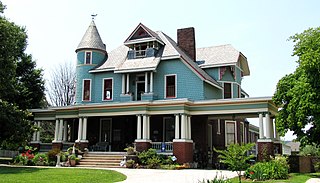
Old North Knoxville is a neighborhood in Knoxville, Tennessee, United States, located just north of the city's downtown area. Initially established as the town of North Knoxville in 1889, the area was a prominent suburb for Knoxville's upper middle and professional classes until the 1950s. After a period of decline, preservationists began restoring many of the neighborhood's houses in the 1980s. In 1992, over 400 houses and secondary structures in the neighborhood were added to the National Register of Historic Places as the Old North Knoxville Historic District.

Lonsdale is a neighborhood in Knoxville, Tennessee, United States, located northwest of the city's downtown area. Established in the late-19th century as a land development project, Lonsdale incorporated as a separate city in 1907, and was annexed by Knoxville in 1917. After a period of decline in the latter half of the 20th century, Lonsdale has recently undergone several major revitalization efforts.

Charles McClung McGhee was an American industrialist and financier, active primarily in Knoxville, Tennessee. As director of the East Tennessee, Virginia and Georgia Railway (ETV&G), McGhee was responsible for much of the railroad construction that took place in East Tennessee in the 1870s and 1880s. His position with the railroad also gave him access to northern capital markets, which he used to help finance dozens of companies in and around Knoxville. In 1885, he established the Lawson McGhee Library, which was the basis of Knox County's public library system.
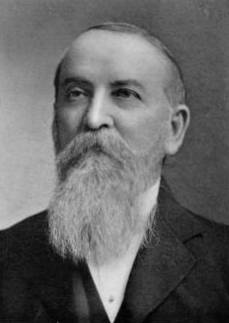
Eldad Cicero Camp, Jr. was an American coal tycoon, attorney and philanthropist, active primarily in Knoxville, Tennessee, and the vicinity. He was president of the Coal Creek Coal Company, president of the Virginia-Tennessee Coal Company, a director of Knoxville's Third National Bank, and at his height, was one of the wealthiest men in East Tennessee. His prominent North Knoxville mansion, Greystone, is listed on the National Register of Historic Places.
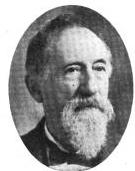
Edward Jackson Sanford was an American manufacturing tycoon and financier, active primarily in Knoxville, Tennessee, in the late 19th century. As president or vice president of two banks and more than a half-dozen companies, Sanford helped finance Knoxville's post-Civil War industrial boom and was involved in nearly every major industry operating in the city during this period. Companies he led during his career included Sanford, Chamberlain and Albers, Mechanics' National Bank, Knoxville Woolen Mills, and the Coal Creek Coal Mining and Manufacturing Company.

The History of Knoxville, Tennessee, began with the establishment of James White's Fort on the Trans-Appalachian frontier in 1786. The fort was chosen as the capital of the Southwest Territory in 1790, and the city, named for Secretary of War Henry Knox, was platted the following year. Knoxville became the first capital of the State of Tennessee in 1796, and grew steadily during the early 19th century as a way station for westward-bound migrants and as a commercial center for nearby mountain communities. The arrival of the railroad in the 1850s led to a boom in the city's population and commercial activity.

The United States Post Office and Courthouse, commonly called the Knoxville Post Office, is a state building located at 501 Main Street in Knoxville, Tennessee, United States. Constructed in 1934 for use as a post office and federal courthouse, the building contains numerous Art Deco and Moderne elements, and is clad in Tennessee marble. While the building is still used as a branch post office, the court section is now used by the state courts. The building is listed on the National Register of Historic Places for its architecture and political significance.





















